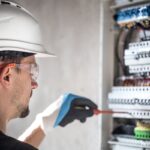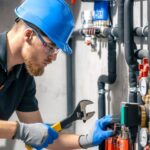There are many challenges when it comes to the water distribution industry as they need to look for reliable infrastructure while balancing economic limitations. Steel pipelines are an important part of this and in this article, we will look at how steel pipelines contribute to cost efficiency.
The primary reason
That steel pipelines are considered cost-efficient is because of their high strength and durability. These pipes can withstand high pressures and are resistant to physical damage. Because of this, they are used in demanding environments. Steel can withstand extreme conditions unlike many other materials and they will not undergo significant deterioration so that they don’t need to be replaced frequently. With durability, it will contribute to long term savings. The initial cost for installing steel pipelines is higher compared to pipeline alternatives like plastic. But it has an extended lifespan and the need for repairs is much reduced which can offset the initial expense. Steel pipelines can also last for about 50 years or even more when they are properly maintained. This creates a reliable solution for water distribution. You can find more information on how the performance of steel is increased by checking out the websites and blogs of steel pipe manufacturers.

Another factor to consider
When it comes to the cost efficiency of steel is its maintenance. While steel is a strong material, it needs maintenance from time to time to prevent corrosion and other wear. But with advancements in technology, there are many protective coatings and cathodic protection systems that have led to the increase of steel pipe lifespan. Epoxy and polyethylene are used as protective coatings and these are used to protect steel pipes from corrosive elements. Cathodic protection systems use electric currents to prevent corrosion in the pipes. The frequency of maintenance and its severity are reduced thanks to these systems. This can also reduce the overall lifecycle costs of steel pipelines. The maintenance of steel pipelines is quite predictable and manageable as well. This can make it easier for utilities to budget for maintenance activities. This can also improve cost efficiency.

There are long term economic benefits of steel pipes as well.
When water utilities invest in infrastructure that is durable and long lasting, this can help them avoid the high costs related to replacing the pipes frequently and carrying out extensive repairs. This can ensure a stable water supply which is essential for industrial and residential users. Given the reliability and strength of steel pipelines, risk of water loss is reduced through rupturing or leaking. Water loss is a waste of valuable resources and it can also lead to high financial costs for the utilities. And when these losses are minimised, the steel pipelines are able to maintain their efficiency and cost-effectiveness. The initial installation cost for steel is also high but you have to consider this with the overall lifespan and performance of the pipes. While steel pipes are heavier and the installation process is labour intensive, their robustness balances this cost. And steel pipelines are able to withstand higher flow rates and pressure so they are much suited for large scale water distribution networks.
















